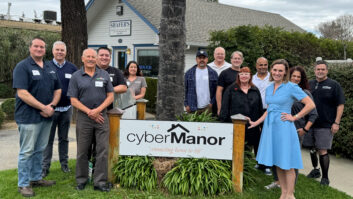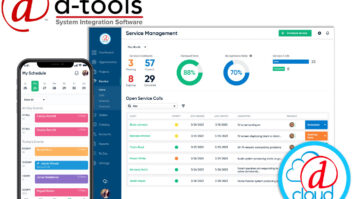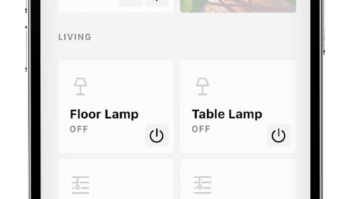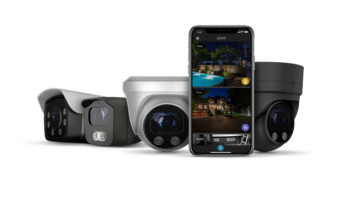

When given the assignment to check up on the state of recurring monthly revenue (RMR) programs, it seemed like a pretty straightforward task. After all, everybody embraces RMR, right? We began by randomly reaching out to custom integrators around the country, including a few large, high-revenue businesses. Our simple request: tell us about your RMR service program.
But the first four integrators we spoke with had either never offered any kind of RMR program…or they had tried a program and ended up dropping it…or they had an existing program, but it was not particularly successful. None of them cared to discuss their RMR efforts for this story.
According to CEDIA’s Dave Pedigo, 29 percent of home technology professionals offer some form of maintenance agreement, including RMR. Another 21 percent say they do not, and will not, offer such programs. No wonder our outreach was hitting a brick wall.
Fortunately, with further due diligence, we identified four top integration companies that offer successful RMR programs. Each had devised a slightly different solution–three of them with homegrown programs and one of them choosing to work with an outsourced independent national provider of RMR programs.
Chris Smith said that Cloud9 Smart of New York City got involved with maintenance contracts that generate significant recurring monthly revenues many years ago as they started out on the commercial side of the business.
“The idea is if I’m going to be available for you to do the work that you need, I need to know my infrastructure is scaled accordingly.”—Chris Smith, Cloud9
“We launched the residential division of our company about seven years ago, and when we did that, we looked at every installation as again an opportunity to sell a maintenance contract,” he said.

In fact, Cloud9 Smart is so committed to selling maintenance contracts that they made a decision two years ago to remove what Smith calls the “break-fix” option (waiting for something to break, and then sending a truck to fix it) from their client relationships. This means that at the end of the standard six-month warranty period, if the client declines signing up for some level of maintenance contract, then this triggers another conversation.
“We tell them, great! No problem! We’re absolutely 100-percent happy to take all of the wiring diagrams, systems schematics, passwords, IP tables, programming files… put them all together and hand them over to any other integration firm you wish,” Smith said with conviction. “But we won’t be able to service your system any longer.”
Sound extreme? For Smith, it’s only logical.
“The idea is if I’m going to be available for you to do the work that you need, I need to know my infrastructure is scaled accordingly,” Smith explained. “And I need to have that planned up all the time–not just when you might need it…so that’s important to us.”
Every client is “sold” a maintenance contract on every installation. And the conversation starts right at the beginning. On the initial proposal, there is a line item for a quantity of 0.5 for a one-year maintenance agreement–or six months–“at the price that it will be billed at…and then we credit it back.” The service offerings are spelled out on the page, with the value clearly shown, but at a “$0.00” net cost for the first six months.
But that’s not all. The company sets up a series of what Smith called “triggering processes” that include at least one field visit during that first six months, and constant remote monitoring and system management. Every time some action is taken remotely, a zero-cost invoice is issued to the client so they can see what work was done and the value of that service.
“We’ve been doing this now for about two years, and we don’t really have a lot of washout,” Smith said. “I think with the clients that we’re seeing now, we’re probably in the nine- or 10-out-of-10 range as far as our renewal rate.”
But, what about providing a 24/7 helpdesk? Cloud9 has it, but most clients don’t opt for that. “In fact, we actually did a study on our tickets and we found that it was less than 20 percent of tickets that came in on nights and weekends,” Smith said. “Could it be that we’ve trained our clients accordingly? Could it be that we’ve installed systems that are fundamentally more reliable? And could it be that the proactive system management that we do keeps them functioning better more often? Is that why we don’t have that craziness?”

Ben Lentz, of Cyber Technology Group (CTG) in Scottsdale, AZ, said that unlike others pursuing RMR, his company had a slightly different motive when they began researching and testing plans for a client care plan four years ago.
“I think our motives were a little different than a lot of folks that are getting into this,” Lentz said. “It’s obviously exciting to have another revenue stream–to have money coming in while you are sleeping. But the real goal for us is that we were just trying to re-educate the marketplace that these systems actually need maintenance.”
The “re-education” was necessary, according to Lentz, because previously they had promoted service as part of the sale. “We were doing a lot of extra work for free,” he said.
So their mission was to recast their role and help clients understand that some level of ongoing maintenance is required for today’s highly sophisticated technology solutions. When CTG initially created their program years ago, it was more of a “digital concierge” concept, according to Lentz. Packages were created with special services, prepaid labor, and other incentives. What they ended up with back then was pretty convoluted.
“It was very complicated,” Lentz said, noting that since then they’ve refined the program. “In four years, we’ve really, really simplified it.”
There are three critical elements to the plan they most often recommend: first, they schedule what they call “wellness visits” once every 90 days; second, remote system monitoring and management; and third, priority after-hours care with a callback guaranteed within an hour.
Lentz pointed out that the wellness visits are a key element for the client, and for CTG. “If I’m coming out to the house because it’s just a scheduled wellness visit, there’s a whole different attitude with the client. They’re receptive to new technology, and there’s this fun conversation we’re having,” Lentz said. On the old break-fix model: “If we’re running out there to fix something…they’re pissed. ‘Get my TV back on…I don’t want to hear about an upgrade.’”
Like the others, Lentz said the best approach to selling their Client Care Plan is to begin acclimating the client to the concept of ongoing service right from the beginning.
“It starts in the very, very beginning when you first meet the client. It’s phrases like, ‘You’re going to love this system and it’s going to work great,’” Lentz said. “‘But, you’ll really appreciate our level of service, because at the most inopportune time, things can happen.’”
At some point, the salesperson revisits the topic by showing the client their monitoring station and then finally, at the end of the installation process, it is presented again.
Currently, their adoption rate is better than 50 percent on new system sales. For those clients refusing a Client Care Program, they are reminded of the normal service level.
Summing up what their Client Care RMR program has done for CTG, Lentz said: “It’s not a huge piece of our overall revenue–it’s a chunk. It just leads to a really good client experience and it leads to upgrade conversations in a really positive way.”
“The real goal for us is that we were just trying to re-educate the marketplace that these systems actually need maintenance.”—Ben Lentz, Cyber Technology Group (CTG)
Ron Wanless, owner of Technology Design Associates (TDA) in Oregon and Washington, said that he was drawn to establishing some form of a maintenance agreement program (ultimately called the Client Care Program) not so much because of the RMR revenue stream, but to reduce truck rolls. The traditional model of offering break-fix service on installations meant he lost money every time he rolled a truck.
Wanless instantly saw the value of remote monitoring, which he learned about from an Ihiji presentation. “I was all over it, because I could see the value in logging in and remotely diagnosing the problem immediately, versus sending a truck out to the location,” he said.
And on that point, Wanless noted they have been way more successful than he could have ever imagined. “We have gotten good enough with our program now that we actually do 82 percent of our client’s phone-in service calls remotely, without rolling a truck,” Wanless added. “That’s a real number.”
But developing a Client Care Program was exceedingly challenging, Wanless said, noting that he went through seven or eight iterations before finally landing on the current version about 10 months ago.
“Oh my God, I think I probably threatened to slit my wrists two or three times creating this program,” Wanless laughed. “It was a very difficult process in figuring out primarily what you can get away with to bill a client on a monthly service plan–and what services the client would expect.”
The breakthrough came when they realized that inclusionary services were not a hard-and-fast rule. With that realization, the door was opened to “a pricing structure low enough that people would buy in,” but still high enough “that we could cover all of our costs.”
Still, TDA experienced some client pushback. The key to the rollout for TDA was to force-feed it.
“The way that we got initial buy-in on this whole program was that we force fed it,” Wanless said. “So every client during that two-year period that we sold a system to was required to be on the program for a year.”
It was not easy, and Wanless admitted that requirement lost them a couple of projects. “But we stood firm with it, and we made it happen,” he said. “And I have yet to have anybody who still has the system that we installed that we force fed that program to that has dropped off after that first year–they’ve all renewed.”
Financially, TDA is at a point now where they have enough people in the program that it pays for itself, and by the end of the year it will generate a bottom-line profit. “In the long run, it will establish a good solid income, as well as be a great selling point for the company,” Wanless said.
Because he had worked with an alarm company for the last 20 years, Matt Walin of Brilliant AV in Costa Mesa, CA, was very familiar with the concept of an RMR program as it relates to central station monitoring. But it was about two years ago when his company began exploring the concept of offering residential clients some form of a maintenance agreement covering their home AV and automation installations.
“We could clearly see that this was where it was going to go and explored how to best get engaged in providing a value that people would pay for and how to basically define that mechanism,” Walin said. “Unlike with security monitoring, where it is pretty tried-and-true and culturally understandable, the audio/video technology manager is not so widely known within our customer culture. So it’s been slower to get it truly adopted. But I feel like we finally have a winning product.”
Yet, Walin struggled to create a program that would be of sufficient value to his clients, and affordable and profitable. To pull it off, he quickly determined that the first step was to review the appropriate hardware necessary to enable remote system monitoring and management. As that issue was solved, he began looking at the people and process needs. To do it right, he felt strongly that they needed to have a dedicated service team and a way to offer a 24/7 helpdesk solution.
“Because if I have someone work more than eight hours, I have to pay them overtime,” Walin said. “Then after 12 hours, it’s double time. And in the State of California, if they are on call, I have to pay them whether or not they’re doing anything.”
They were stuck.
“Then luckily, OneVision came along,” Walin said. OneVision is a national service and support provider for local integrators. It offers a full turnkey client support solution with a 24/7 helpdesk and remote monitoring and management capability.
For Brilliant AV, this changed everything. “So now I can go to the client as a salesperson and I can say, ‘We are a service company and we have a 24/7 helpdesk…and it’s free. You can sign up as one of our clients for that free 24/7 support. Whatever question you have, call in and they will help you out.”
With OneVision, Brilliant AV has created three tiers of support. Essentials provides free 24/7 help desk and Monday-Friday truck-roll service, if necessary. Priority, which is $100/month, offers the same 24/7 helpdesk plus front-of-the-line service, and truck roll the next available day, seven days a week, when necessary. Proactive, which is $200/month, offers all of the above plus remote monitoring capability via an installed Ihiji and WattBox.
Looking down the road, Walin sees this program continuing to grow. “I think in five or 10 years, 100 percent of my clients will be paying me something month-to-month because that is what it will take to keep their stuff going,” he predicted. “I will be a technology manager. Technology will continue to change exponentially and will surpass people’s grasp about what is possible and what just happened. Clients will need, and rely on, technology advocates.”






